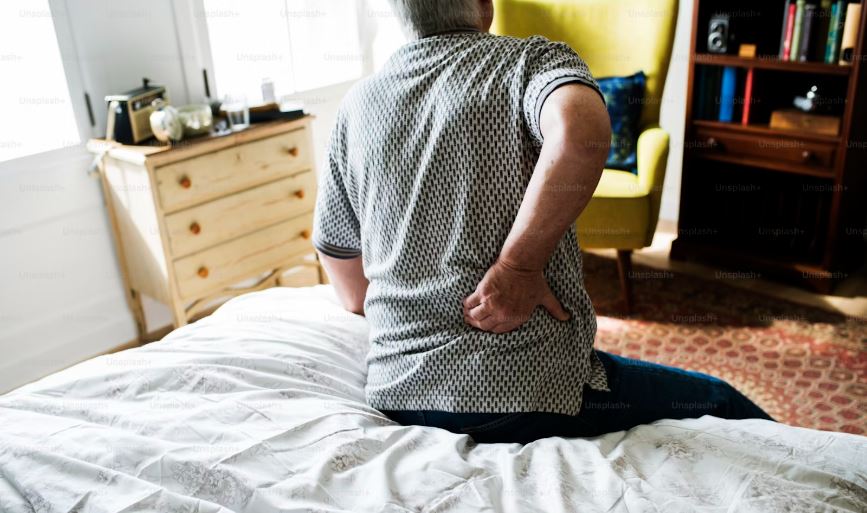If you’ve ever dealt with sciatica, you know how relentless it can be. The burning, tingling, or stabbing pain that radiates from the lower back down the leg can make simple movements—like standing, walking, or even sitting—unbearable. While many turn to painkillers, physical therapy, or even injections, some are now exploring photobiomodulation through cold laser therapy as a way to relieve nerve pain without invasive treatments.
Cold laser therapy works by using photobiomodulation to stimulate cellular repair, reduce inflammation, and promote natural healing—offering a non-invasive solution for sciatica relief.
Mary, who struggled with lingering sciatic pain, found relief with cold laser therapy:
“A bout of sciatica about two years ago left me with pain and discomfort, so I used the Pulse Laser on my back. There was improvement in this area also.”
But how exactly does cold laser therapy help, and is it worth trying for sciatica relief?
Understanding Sciatica: What Causes the Pain?
Sciatica isn’t a condition itself—it’s a symptom of an irritated or compressed sciatic nerve. This nerve, which runs from the lower spine down each leg, can become pinched due to:
- Herniated or bulging discs pressing on nerve roots
- Spinal stenosis, where the spinal canal narrows and compresses nerves
- Piriformis syndrome, where a tight piriformis muscle in the buttock irritates the sciatic nerve
- Degenerative disc disease, which can lead to nerve inflammation and pain
The pain can range from dull aches to sharp, electric-like shocks, often worsening with prolonged sitting, bending, or sudden movements.
How Cold Laser Therapy Can Help Sciatica
Cold laser therapy, also known as low-level laser therapy (LLLT), uses light energy to penetrate deep into tissues, stimulating cellular repair and reducing inflammation. This makes it particularly beneficial for conditions involving nerve compression and chronic pain, such as sciatica.
A study published in Photomedicine and Laser Surgery found that low-level laser therapy significantly reduced pain and disability in patients with lower back pain and sciatic symptoms, suggesting that it may be a valuable tool for nerve-related pain relief.
Key Benefits of Cold Laser Therapy for Sciatica
- Reduces Inflammation Around the Nerve – Inflammation is often the root cause of sciatic pain. Cold laser therapy decreases inflammatory markers, helping to ease pressure on the nerve.
- Stimulates Nerve Healing – Unlike painkillers, which only mask symptoms, laser therapy boosts cellular repair and enhances nerve function, potentially addressing the underlying issue.
- Improves Blood Flow to the Affected Area – Increased circulation helps reduce stiffness, speed up healing, and prevent further irritation of the sciatic nerve.
- Relaxes Tight Muscles – Many cases of sciatica are worsened by muscle tension, particularly in the lower back and glutes. Cold laser therapy helps loosen tight muscles that may be pressing on the nerve.
- Non-Invasive and Drug-Free – Unlike steroid injections or surgery, laser therapy has no side effects and can be used regularly without long-term risks.
How to Use Cold Laser Therapy for Sciatica Relief
To get the most out of cold laser therapy, targeting the right areas is key.
- Lower back – Focus on the lumbar spine, especially if a herniated disc or spinal stenosis is the cause.
- Glutes and piriformis – If piriformis syndrome is irritating the sciatic nerve, applying laser therapy here can help relax the muscle.
- Back of the thigh and calf – If pain radiates down the leg, treating the hamstrings and calves can help reduce tension along the nerve’s path.
Recommended Usage
- Acute pain – Use daily for 5–10 minutes per area until symptoms improve.
- Chronic sciatica – Use 3–5 times per week as part of a long-term pain management plan.
Additional Strategies for Sciatica Relief
While cold laser therapy can be highly effective, combining it with other recovery techniques can improve results:
- Gentle stretching – Loosening tight hamstrings and hip flexors can reduce nerve irritation.
- Strengthening exercises – Core and glute activation help support the lower back and prevent recurring pain.
- Heat and ice therapy – Alternating between heat (to relax muscles) and ice (to reduce inflammation) can provide short-term relief.
- Posture adjustments – Avoid prolonged sitting and make sure your chair supports your lower back properly.
Final Thoughts: A Promising Option for Sciatica Pain Relief
Sciatica can be debilitating, but that doesn’t mean surgery or pain medications are the only answers. Cold laser therapy offers a gentle, effective way to reduce inflammation, promote nerve healing, and ease radiating pain—all without invasive procedures.
For those looking for an at-home solution, the Handy Cure Low-Level Laser is an accessible option that allows users to take control of their pain management on their own schedule.
If you’ve dealt with sciatica, what treatments have worked best for you? Let’s continue the conversation.
References:
Konstantinovic, L. M., Kanjuh, Z. M., Milovanovic, A. N., Čutović, M. R., Djurovic, A. G., Savic, V. G., Dragin, A. S., & Milovanovic, N. D. (2010). Acute low back pain with radiculopathy: A double-blind, randomized, placebo-controlled study. Photomedicine and Laser Surgery, 28(4). https://doi.org/10.1089/pho.2009.2576
